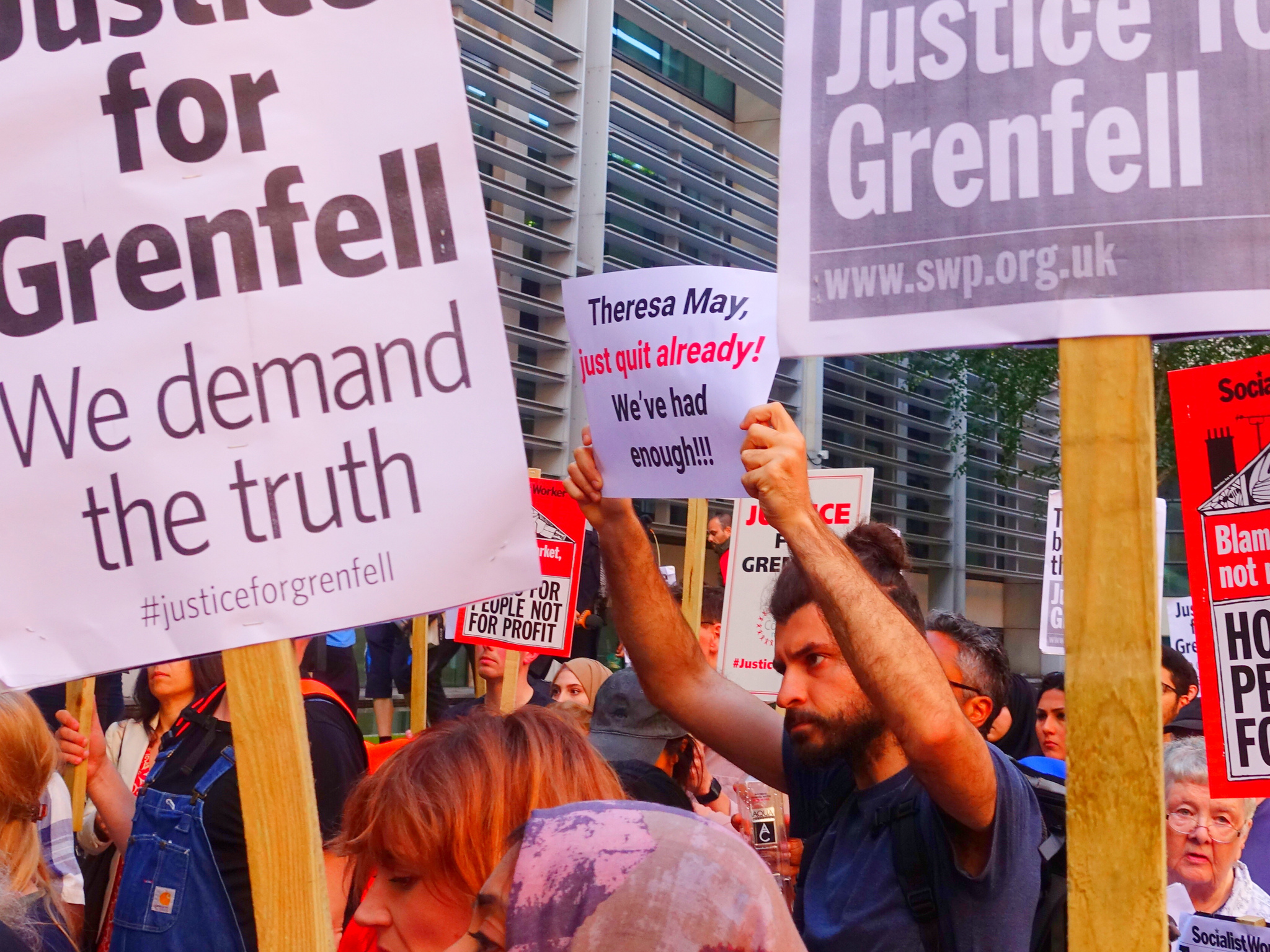The chairman of the Grenfell Tower Inquiry has identified the London Fire Brigade’s preparation and planning for such a blaze as ‘gravely inadequate’ and claimed that fewer people would have died but for its shortcomings. Sir Martin Moore-Bick concluded his Phase 1 report with a call for a new fire safety and evacuation regime.
The report criticises the London Fire Brigade on three main fronts.
London Fire Brigade: planning
First, the ‘stay put’ policy, which recommends that residents are safer in their flats than trying to escape, should have been lifted earlier. National guidance requires fire and rescue services to draw up contingency evacuation plans for dealing with fires in high-rise buildings that spread beyond the compartment of origin causing a ‘stay put’ strategy to become untenable. This policy, however, had become ‘an article of faith within the London fire brigade so powerful that to depart from it was…unthinkable’. The current ‘stay put’ strategy applies to most of the UK’s estimated 4,000 high-rise apartment blocks over 18 metres tall.
Moore-Bick observed further limitations to the fire brigade’s readiness. For instance, otherwise experienced incident commanders had received no training in the particular dangers associated with combustible cladding. There was also no contingency plan for the evacuation of Grenfell. The risk database for the building ‘contained almost no information of any use’ and the information it did contain dated from 2009, before the refurbishment took place between 2014 and 2016.
London Fire Brigade: on the ground
Second, the commanders failed to display the necessary level of flexibility at the incident itself. None ‘conceived of the possibility of a general failure of compartmentation or of a need for mass evacuation; they neither truly seized control of the situation nor were able to change strategy’. The best part of an hour was lost before assistant commissioner Andrew Roe revoked the ‘stay put’ advice. The failure to adjust to the circumstances constituted a ‘systemic’ shortcoming and there were ‘serious deficiencies in command and control’. Indeed, both personnel and systems were ‘overwhelmed by the scale of the disaster’.
London Fire Brigade: in the control room
Third, there were faults in how the control room in Stratford, east London, processed 999 calls. These relate to shortcomings in practice, policy and training. Operators ‘too often treated what callers were telling them with scepticism, in some cases contradicting the caller’. For example, they ‘insisted the fire was on floor four, contrary to what they were being told by the caller. They appear to have been unable to grasp the fact that it had spread rapidly up the building’. This type of failing in large part occurred because the control room was ‘overwhelmed’ by an unprecedented volume of emergency calls from Grenfell residents. This resulted in operators offering inaccurate information about when help was coming, damaging the whole concept of fire survival guidance.
The General Secretary of the Fire Brigades Union, Mark Wrack, criticised the report as ‘unfair and unjust’ on two grounds. First, he said it should have assessed why the building was covered in combustible cladding to begin with. Second, he suggested the report failed to sufficiently scrutinise government policy on fire safety.
 Breach of building regulations
Breach of building regulations
Describing the rapid spread of the fire as ‘profoundly shocking’, Moore-Bick said there was ‘compelling evidence’ that even following the 2014-2016 refurbishment, the external walls of the building failed to comply with requirement under schedule 1 of the Building Regulations 2010, in that they did not adequately resist the spread of fire having regard to the height, use and position of the building.
The main reason for the spread of the fire were the cladding panels, manufactured by Arconic, ‘with polyethylene cores, which had high calorific value, melted and acted as a source of fuel for the growing fire’. The design of the refurbishment, overseen by Studio E Architects, as well as the insulation materials made by Celotex and Kingspan, also contributed, he said.
Legal and policy recommendations
Of the policy recommendations made by Moore-Bick, two prove the most legally significant.
First, Moore-Bick recommended government ministers to develop national guidelines for total or partial evacuation of towers and to make it illegal for owners and managers of high-rise buildings not to draw up evacuation plans.
The new guidelines should include the means of protecting fire exit routes and procedures for evacuating persons who are unable to use the stairs in an emergency, or who may require assistance (such as disabled people, older people and young children). This should include alarm and notification systems to broadcast evacuation instructions to residents.
Arnold Tarling, a fire safety expert, told the Guardian: ‘This is a big change to how we respond. But single-staircase tower blocks are not suitable for immediate evacuation. You will have people tripping over, you will have all the ill and toddlers, so how are they going to get out of there safely?’
Second, Moore-Bick recommended that it be made legally compulsory for every owner and manager of every high-rise residential building to provide their local fire and rescue service with information about the design and material composition of its external walls. Fire services must also be informed of any material changes. By extension, all fire and rescue services must ensure that their personnel at all levels understand the risk of fire taking hold in the external walls of high-rise buildings and know how to recognise it when it occurs.
Hearings for the second phase examining events and decisions leading up to the fire will begin early in the new year.







